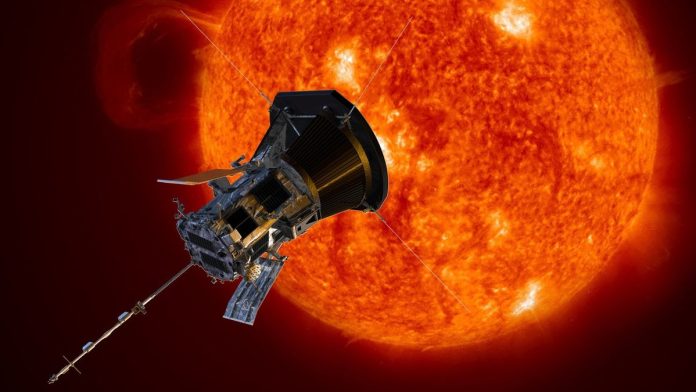Astronomers are eagerly awaiting an epic early Christmas present from a NASA spacecraft, which is set to make the closest-ever flyby of the sun on Dec. 24. The Parker Solar Probe will fly through the sun’s outer atmosphere at 6:53 a.m. EST (1153 GMT), passing within 3.8 million miles (6.1 million kilometers) of the star’s surface. This historic event will be the spacecraft’s final trial, following a series of close swings by the sun and seven flybys of Venus in its mission to study the sun like never before.
Nick Pinkine, the Parker Solar Probe mission operations manager at the Johns Hopkins Applied Physics Laboratory, expressed excitement at the mission’s unprecedented achievement. He mentioned that the spacecraft will be venturing into uncharted territory and gathering valuable data.
What time will NASA’s Parker Solar Probe fly through the sun?
The closest sun flyby by the Parker Solar Probe is scheduled for Tuesday, Dec. 24, at 6:53 a.m. EST (1153 GMT). During this time, the spacecraft will reach its closest point to the sun at 3.8 million miles.
As the Parker Solar Probe embarks on its 22nd close encounter with the sun, it will be traveling at a stunning speed of about 430,000 mph. The spacecraft will fly through the sun’s super-hot corona to study solar phenomena and investigate the reasons behind the region’s extreme temperature.
Can I watch the Parker Solar Probe sun flyby online?
Unfortunately, the Parker Solar Probe’s sun flyby will not be broadcast live. However, updates on the spacecraft’s status will be available online from NASA, the Parker Solar Probe mission team, and the JHUAPL Parker Solar Probe site. Additionally, NASA’s Eyes On The Solar System Parker Solar Probe page allows users to track the spacecraft’s progress online.
You can also find detailed information about the mission and the sun flyby on JHUAPL’s “A Star Explored” walkthrough.
How hot will Parker Solar Probe get during its sun flyby?
Despite encountering temperatures of up to 1,800 degrees Fahrenheit during the sun flyby, the Parker Solar Probe is equipped to withstand the heat. Its heat shield, made of a specialized type of carbon foam, is designed to protect the spacecraft’s components and scientific instruments from temperatures up to 2,500 F.
While the heat shield faces extreme temperatures, the spacecraft’s body remains at room temperature to ensure optimal operation during the flyby.
For updates on the spacecraft’s temperature and other findings, the Parker Solar Probe team will be closely monitoring the mission.
How long is Parker Solar Probe’s sun flyby?

Although the Parker Solar Probe will complete its sun flyby in a matter of hours, the mission team will be monitoring the spacecraft’s progress for over a week. Updates from the Parker Solar Probe are expected to start trickling in on Dec. 20 when the spacecraft signals its status to mission controllers at the Johns Hopkins Applied Physics Laboratory.
On Dec. 27, the team anticipates receiving the first signal from the Parker Solar Probe after the flyby, providing a check on the spacecraft’s health. Further communications are scheduled for Jan. 1, 2025, to retrieve telemetry and data from the mission.
What happens after the Parker Solar Probe’s sun flyby?
Following the Christmas Eve sun flyby, the Parker Solar Probe will continue its mission with at least two more close encounters with the sun before the end of its primary mission in 2025. The spacecraft will undergo additional flybys, providing valuable data about the sun’s atmosphere and behavior.
The mission team will evaluate the spacecraft’s performance after the flyby on Dec. 24 and plan the next steps for the Parker Solar Probe as it continues to explore the sun.




